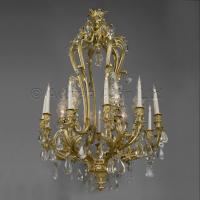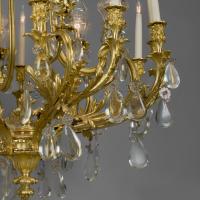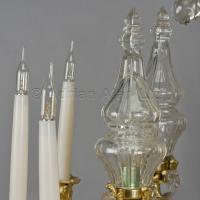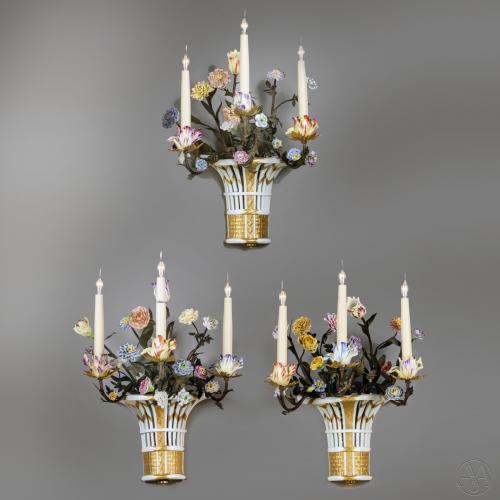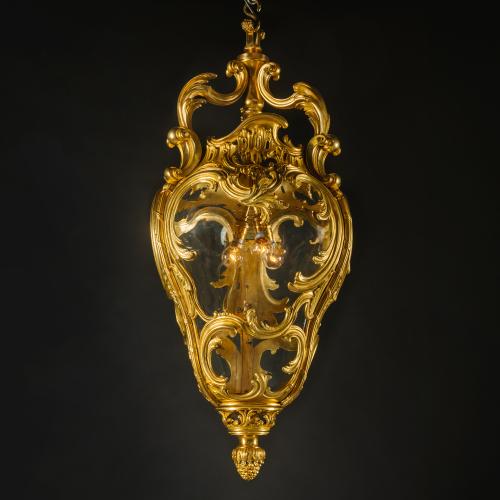
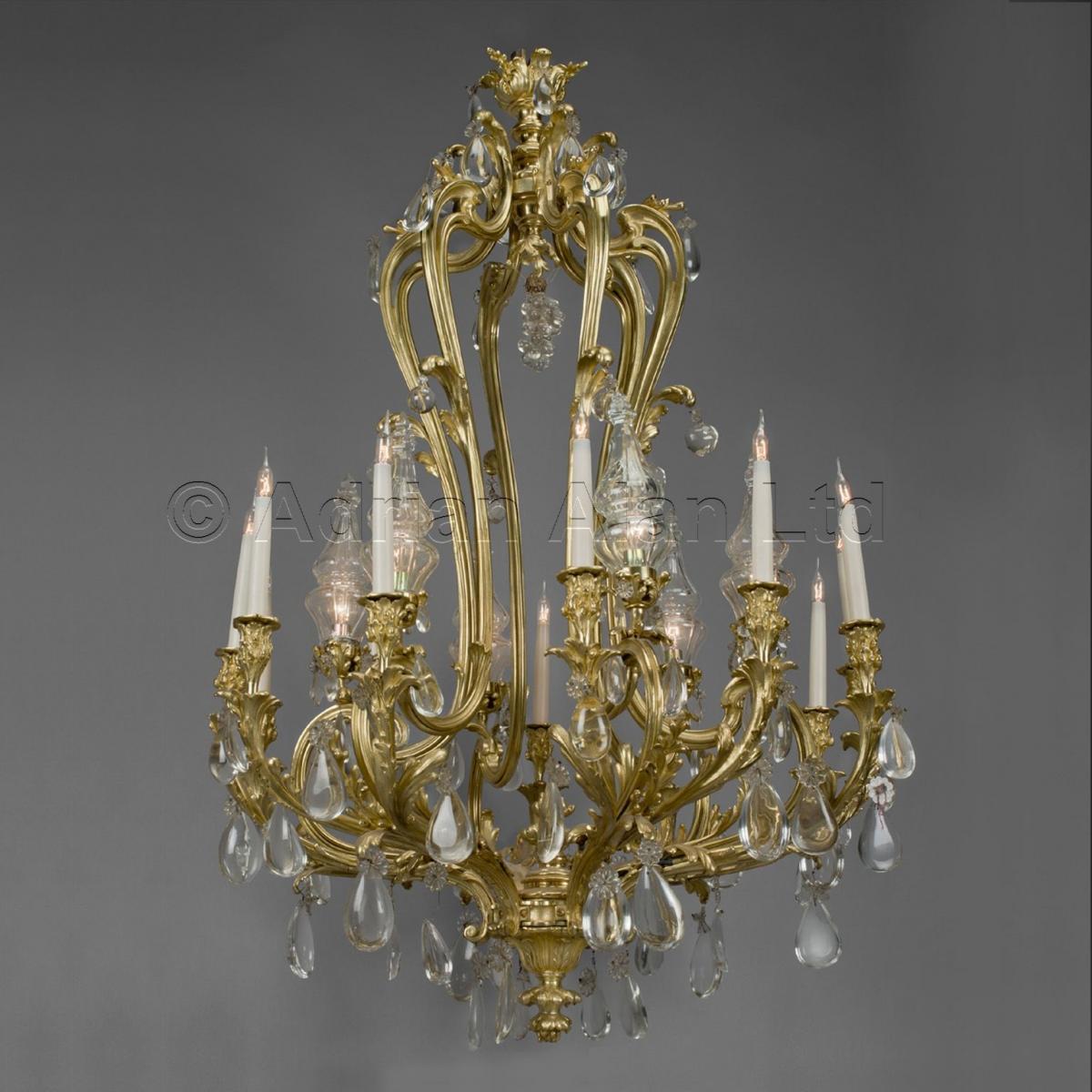
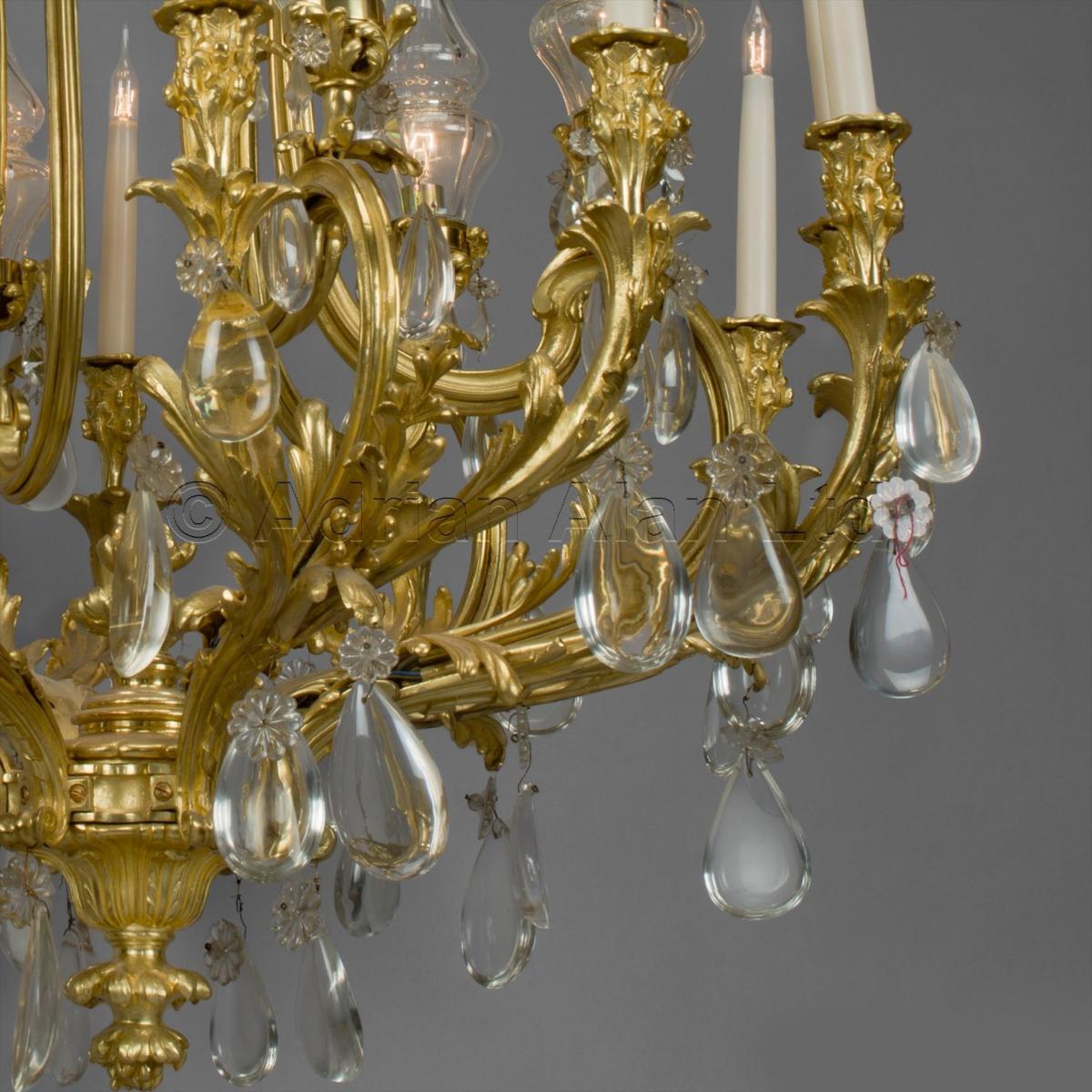

Price on application
This object is eligible for a Certificate of BADA Provenance
The BADA Standard
- Since 1918, BADA has been the leading association for the antiques and fine art trade
- Members are elected for their knowledge, integrity and quality of stock
- Our clients are protected by BADA’s code of conduct
- Our dealers’ membership is reviewed and renewed annually
- Bada.org is a non-profit site: clients deal directly with members and they pay no hidden fees
An Important Louis XV Style Twelve-Light Rock Crystal and Gilt-Bronze Chandelier.
French, Circa 1850.
An Important Louis XV Style Twelve-Light Rock Crystal and Gilt-Bronze Chandelier, surmounted by a floral corona, issuing six scrolling branches, each terminating with three circular drip pans and nozzles, decorated all over with drops, grapes, apples and baluster shaped shades.
The etymology of the word "crystal" has its origins in the Ancient Greek word for ice ‘krystallos’. Rock crystal which is always cool to the touch they considered to be ice permanently frozen by the Gods. For thousands of years Rock crystal has been prized for its beauty and remarkable ability to refract light. When cut and polished, the inherent striations and inclusions of the crystal create a refracted light richer in luminosity than that of manmade crystal or glass. These properties have made it highly desirable throughout history; its scarcity ensuring its use was limited to all but the most luxurious of decorative items.
Rock crystal is in reality a natural quartz, pure monocrystals of siliceous oxide. A material of exceptional hardness with indices of light refraction close to that of a diamond, quartz has been mined and worked since antiquity. In the Middle Ages, this rare material was used almost exclusively on religious objects. A prohibitively expensive material, Cristal de roche was first mined in France in small quantities in the 17th century and its rarity forced artisans to innovate.
The imitation of crystal began in Venice in the 15th century - the art of the glassmaker being to recreate the limpidity and luminosity of rock crystal. To do this, the glassmakers invented a 'crystal' made in reality of glass combined with a mixture of potassium, silicon, manganese and lead oxide heated to between 1200 and 1500 degrees. This crystal imitated rock crystal, although it displays a metallic colouring. This crystal de roche should not be confused with what is now called crystal. The latter was a development of 18th century Bohemia and, subsequently France with the Manufacture Royale de cristaux.
Rock crystal first appears as small beads on candelabras and chandeliers - not yet called lustres - in the 17th century. At the beginning of the 18th century the discovery of new seams in Central Europe allowed the mining of larger blocks of crystal, which could in turn be worked into pyramids, drops and stars. The highest value was historically based, like diamonds, on two things - the weight and the clarity or limpidity of the crystal. The clearer the better, hence the phrase d'une très belle eau when referring to crystal.
Perhaps the earliest recorded-reference in France is in 1697, when Louis XIV offered twelve grand 'lustres' in 'cristal de roche' to the King of Siam. Louis XV also possessed a chandelier with twelve branches in his chambre a coucher at Versailles which had been delivered by Delaroue and Slodtz. This was commented on by the duc de Luynes: 'on a mis dans la chambre du roi, un chandelier en cristal de roche d'une grande beauté et que l'on estime au moins a 100 000 livres'.'
Dimensions
Height : 145 cm 57 inches Diameter : 95 cm 37 inchesWeight
Weight : 75 kg 165.345 lbsStock number
B57540The BADA Standard
- Since 1918, BADA has been the leading association for the antiques and fine art trade
- Members are elected for their knowledge, integrity and quality of stock
- Our clients are protected by BADA’s code of conduct
- Our dealers’ membership is reviewed and renewed annually
- Bada.org is a non-profit site: clients deal directly with members and they pay no hidden fees


